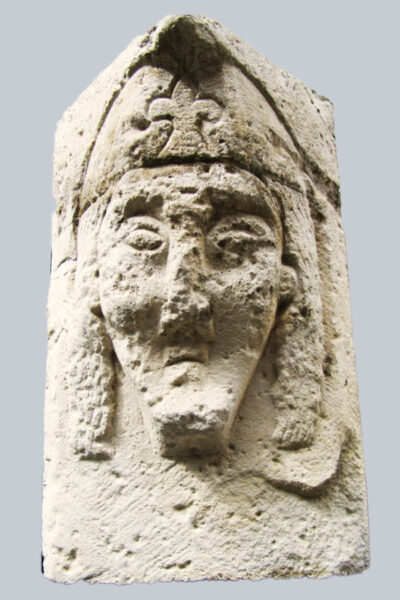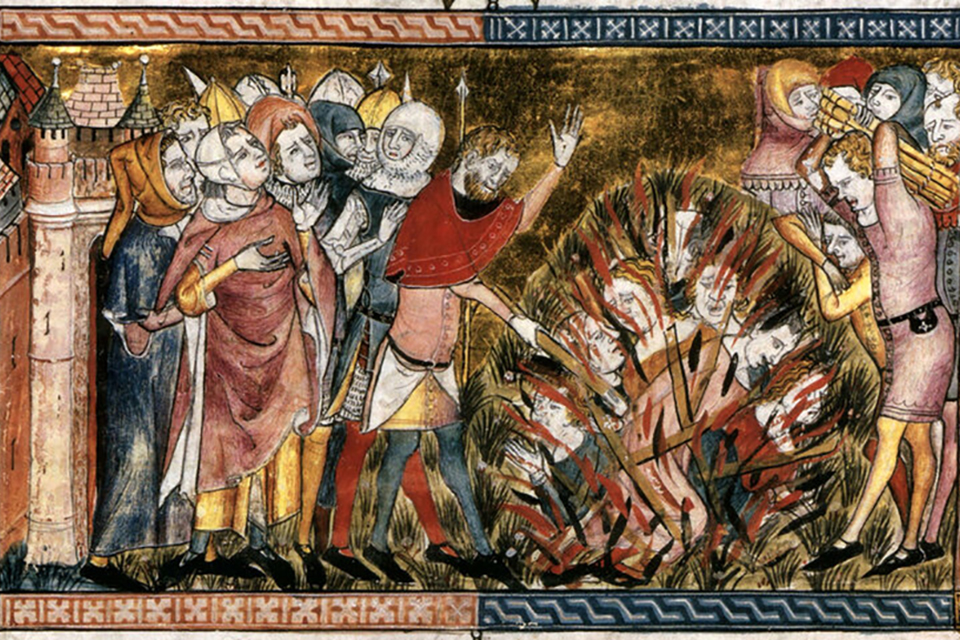Since the Middle Ages, Erfurt in Germany was home to several well-documented Jewish communities. Each wiped out by pogroms followed by the holocaust, the city tells a horrifying history.
Visitors to other historic town in Germany might catch glimpses of the history of the Jews. In Erfurt, however, the story can be told covering nearly a thousand years and witnessing more than four different communities through the remarkable remains.
The First Jewish Community ca. 1000-1349

The earliest evidence of a Jewish community in Erfurt is provided by the Old Synagogue, which dates from the 11th century. Written records in the form of tax lists and deeds document that the Erfurt Jews in the 13th century worked in banking, not just locally, but across the Holy Roman Empire. During this period, Jews and Christians lived next door to each other in the immediate city center between the town hall, St. Michael’s church, and the Merchant’s Bridge. Here, the synagogue was located, along with a mikveh, a Jewish ritual bath, nearby. The cemetery was outside the residential area at Moritztor.
As early as 1221, the first Jewish pogrom took place when between 20 and 30 Jews were rounded up and executed. As usual, the pretext was a rumor of blood libel, the belief that Jews would murder Christian children to drink their blood. During this event, Christians attacked the synagogue, destroyed the Torah Scrolls, and killed those present.
An important cache of preserved Hebrew manuscripts in the Berlin State Library bears witness to the lively schul in the High Middle Ages, fostering eminent scholars such as Alexander Suslin ha-Kohen, who may have died in the persecutions following the Black Death.
The plague reached Erfurt in March 1349 and, as elsewhere, prompted a series of harsh persecutions fueled by Christian hatred, professional jealousy, political considerations, and economic gain.
The accusation that Jews had been poisoning wells, thus causing the plague, was apparently a convenient excuse for violence. However, the events in Erfurt took place two months before the plague arrived on March 21, 1349, when the entire Jewish community in Erfurt was exterminated. Initially, a hundred people were murdered. Later, up to 900 people were burned to death in their houses, where they had sought refuge. There has been debate whether the massacre was a result of the plague or a “simple” act of horror in the form of a regular pogrom, intended to further the confiscation of Jewish wealth and valuables. Cohn (2007) reached this conclusion after sifting through available sources, archival records, and chronicles, suggesting that “patrician city governments, rural castellans, regional dukes, and the Holy Roman Emperor himself” were responsible for the Jewish massacres.
However, a recent survey presents a more mixed conclusion, based on sources documenting events in mid-14th century Erfurt, carefully recorded as part of a court case brought against the perpetrators in July 1349, resulting in a document titled “Interrogation, Testimony, and Sentence of the Citizens of Erfurt, Who Participated in the Murder of the Jews.” This document names at least eight local squires (Junckers) who led tradesmen such as wool merchants, butchers, tanners, shoemakers, etc., to carry out the heinous deed. According to this document, people had gathered with banners in front of the church, when one of the nobles rode up and encouraged them to slay the Jews. This incitement took place despite the fact that the councillors had instructed Hug de Lange to stop the attack that same morning. Ultimately, 43 individuals were indicted, including nine linked to or members of local noble families. These people were condemned for not abiding by the decree of their masters (the council and guild masters) and were expelled from the city. If they re-entered the town, they were to be executed. Nonetheless, local historians have documented that these individuals managed to slip back into town.
The Second Community 1354–1453
Despite the horrors of the March pogrom, it appears that some Jews returned after 1354, and a new synagogue was built. The old synagogue had by that time been taken over by a local tradesman who kept the building safe over the next 600 years, while new atrocities continued to occur. At this point, the Jews were accommodated in municipal “Jews’ Houses.” Although some very wealthy and influential families continued to exist in this second settlement, engaging in overseas trade and finance, numerous poorer Jews made a living through pawnbroking, trading, and the manufacturing of shofars, ram’s horns blown on holy days. An important feature was the Jewish cemetery, which was frequented by people from surrounding cities where such a facility was not permitted.
In the 15th century, anti-Jewish sentiment grew in Erfurt. In 1453, the municipal council revoked the protection of the Jews, and all Jews left the town around that time. Since 1454, Jews were no longer tolerated in Erfurt. Their dwellings were sold, the synagogue was converted into an armory, and the cemetery was destroyed.
The Third Jewish Community
Jews did not return to Erfurt until after the Napoleonic wars. This time, however, the Jews were granted citizenship, allowed their own cemetery again, and a new synagogue was built. In 1854, their number exceeded 150, all fully recognized citizens. When the Old Jewish Cemetery became too small and couldn’t be expanded, a piece of land was purchased at the Schützenhaus in 1871. The first burial took place there in 1878. This cemetery continues to serve the community and is referred to as the New Jewish Cemetery. During this period, a steady assimilation occurred.
Thus, a Jewish, albeit liberal, community existed in Erfurt in 1932, with 1290 registered Jewish residents. However, by 1933, the census recorded only 831, and this number fell to 263 by 1939. At that point, Kristallnacht had already left its mark. The synagogue had been burnt, and 197 Jews had been transferred to Buchenwald.
Overall, 453 Erfurter Jews were sent to concentration camps. Among them, only fifteen survived the Holocaust and returned after the war. Subsequently, an influx from Russia helped bolster the community, the synagogue was rebuilt, and the community grew.
The Fourth Jewish Community
After World War II, the remaining Jews in Thüringen continued to suffer from persecution. Although their numbers increased due to an influx from Silesia and further east, the community did not thrive until the influx of Soviet Jews left its mark. Today, the congregation consists of 800 members, with 500 residing in Erfurt.
FEATURED PHOTO
Burning the Jews Alive. From Gilles le Muisit, abbot of Saint-Martin de Tournai (1272-1352). Source: Wikipedia
SOURCES:
The Black Death and the Burning of the Jews
By: Samuel K. Cohn Jr (2007)
In Past & Present (2007) no 196, pp 3-36
“The Clamor of the People”: Popular Support for the Persecution of Jews in Switzerland and Germany at the Approach of the Black Death, 1348-1350
By Albert Winkler (2017)
In: Swiss American
Historical Society Review, 53(2), 31-61
Jews in the German Kingdom
By Alfred Haverkamp
In R. Chazan (ed.) (2018), The Cambrige History of Judaism, vol. VI The Medieval Period New York: Cambridge UP.
READ ALSO:
